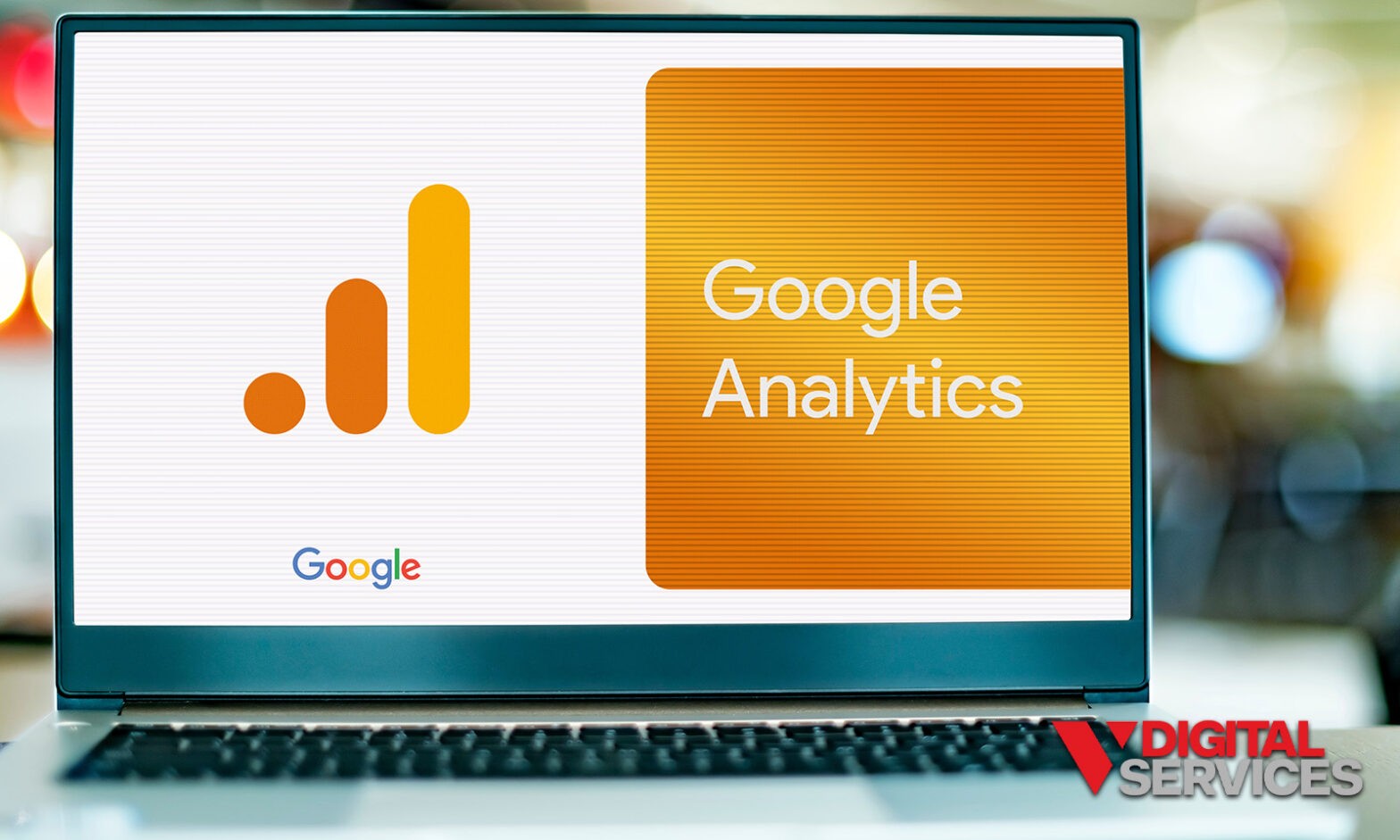For digital marketers and businesses, the constant evolution of modern-day consumer behavior, privacy policies, and technological innovation demands a new kind of comprehensive, forward-thinking solution. Enter Google Analytics 4 (GA4), the revolutionary analytics tool designed to address these challenges, empowering businesses with granular insights to improve their digital marketing strategies.
As we transition from the era of Universal Analytics (UA) to the new GA4, there are many changes to adapt to – but on the other side, there are also plenty of benefits. We’re going to explore the impressive capabilities of Google Analytics 4, giving you an easy-to-use guide that explains exactly what you can expect from its features and advantages. By the time you’re done reading, you’ll be ready to confidently make the switch.
Universal Analytics vs. Google Analytics 4: A Quick Comparison
First, let’s do a quick review on Universal Analytics (UA), the standard Google Analytics version we’ve become so accustomed to. UA has been a reliable companion in our digital marketing journey, assisting us in decoding user interactions and their impacts on our businesses. But as with any tool, it had its fair share of limitations.
Session-based vs. event-based measurement models
UA’s data measurement was based on sessions and pageviews, making it a go-to choice for assessing user engagement within specific timeframes. Yet, it struggled to provide a seamless analysis across multiple platforms, often causing gaps in user data. Plus, in an age where data privacy has taken center stage, UA didn’t quite hit the mark.
Google Analytics 4 (GA4) arrived as a transformative upgrade designed to fill these gaps and more. Right off the bat, one of the striking differences is the shift from session-based to event-based measurement models. In GA4, every user interaction, or “hit,” is an event enriched with parameters, offering a more granular understanding of user behavior.
Machine learning
GA4 further enhances data analysis by incorporating Google Signals and machine learning to identify and plug missing data points. This feature is particularly useful for comprehending the complete user journey across various touchpoints and platforms, something UA fell short of.
Data privacy
But what makes GA4 stand out in the realm of analytics tools is its renewed commitment to data privacy. With a dedicated “Consent Mode” that provides distinct consent options for analytics and ads, GA4 ensures that user data is protected and handled responsibly. Notably, it doesn’t store IP addresses and even boosts data deletion options. These features align perfectly with the growing need for user privacy in our data-driven world.
Data streams from multiple sources
The GA4 experience is further enriched by its unique ability to capture data streams from diverse sources in a single property. Be it a website, an iOS app, or an Android app, GA4 allows you to gather data from multiple touchpoints all in one place. It’s a huge leap forward from UA, which required separate properties for each data source.
Free BigQuery access
One last major difference to highlight is GA4’s free connection to BigQuery. BigQuery is a powerful tool that helps businesses query extensive and complex datasets rapidly. This feature is a boon for companies that need to analyze vast volumes of data on-the-fly.
Exploring the New Google Analytics 4 Features
Overall, GA4 marks a significant step forward in digital analytics, addressing the limitations of UA while offering a suite of new features designed for the realities of modern digital marketing. As we bid farewell to UA, here are some of the exciting opportunities GA4 brings to the table.
User-Centric Metrics and Enhanced Personal Data Control
Among the standout GA4 features is its shift towards user-centric engagement metrics. Metrics such as Engaged Sessions, Engagement Rate, Engagement Time, and Engaged Sessions per User redefine how we understand user interaction. Not only does GA4 focus on user interactions’ qualitative aspects, but it also enhances personal data control, aligning with emerging privacy laws and user expectations.
In-Depth Insights through Advanced Machine Learning
One of the most significant GA4 features is its use of advanced machine learning to generate in-depth customer insights. These tools are designed to predict future actions, allowing businesses to personalize their strategies and optimize their marketing efforts.
GA4’s Predictive Metrics: Churn Probability and Beyond
Churn Probability is a standout feature in Google Analytics 4, predicting the likelihood of a user disengaging with your site or app. Alongside other predictive metrics such as Purchase Probability and Revenue Prediction, GA4 offers a suite of data-backed insights to drive proactive decision-making and foster user retention.
Google Signal Data: A Holistic View of the Customer Journey in GA4
Another notable feature of GA4 is the incorporation of Google Signal data. This feature presents a holistic view of the customer journey, aggregating interactions across multiple devices and platforms. With this cross-platform tracking, GA4 provides a unified perspective on user interactions, enabling a truly omnichannel approach.
Improved Reporting in GA4: Real-Time Analytics and Analysis Hub
Google Analytics 4 features robust reporting options that improve upon its predecessor. The real-time analytics tool provides immediate insight into user interactions, and the Analysis Hub allows for complex analysis and custom reporting. With these GA4 features, businesses have an even greater depth of data exploration.
GA4 Views: Easy Event Setup and Categorization
Event tracking is made easy in GA4, one of its many beneficial views. GA4’s automatic tracking for certain events eliminates the need for custom codes, simplifying the categorization of user interactions. These GA4 views make the platform even more accessible for marketing teams.
GA4 Conversion Events: Streamlined and User-Friendly
One of GA4’s most praised views is the ease with which businesses can track and categorize conversion events. These GA4 conversion events provide actionable insights, allowing businesses to fine-tune their engagement strategies based on user behavior.
In essence, the new Google Analytics 4 features – from improved metrics and privacy control to predictive analytics and streamlined event tracking – redefine how modern businesses view and use data. With GA4, businesses are better equipped to navigate the digital landscape, making informed, data-driven decisions that drive growth.
Why Google Analytics 4 Benefits Your Business
Google has taken a step forward to future-proof digital analytics by halting new hits on Universal Analytics as of July 1st, 2023. While this shift might seem imposing, it definitely helps motivate businesses to switch to Google Analytics 4 (GA4) sooner rather than later.
Transitioning to GA4 as soon as possible can save your business from last-minute scrambling, allowing you ample time to acquaint yourself with the new system and its functionalities. Adapting to the GA4 environment helps businesses stay ahead of the curve, providing them with access to sophisticated tools for tracking, understanding, and optimizing customer journeys.
Google suggests running Universal Analytics and GA4 concurrently during the transition period. This dual deployment allows businesses to leverage the familiar features of UA while gradually understanding and implementing the advanced features of GA4. This overlap period also ensures a smooth transition without any data loss or hindrance to ongoing analysis.
Embracing GA4 is not merely a matter of compliance with Google’s shift but an opportunity to exploit a more powerful, flexible, and user-focused analytics tool.
How to Create GA Dashboards in GA4
Building dashboards in GA4 might seem daunting at first, but it’s straightforward once you understand the process. Here’s a step-by-step guide to get you started.
Log into your GA4 property: Open Google Analytics, navigate to your GA4 property, and click on ‘Analysis’.
Go to ‘Analysis Hub’: In the dropdown menu, select ‘Analysis Hub’, and click on ‘New Analysis.’
Choose ‘Exploration’: Select ‘Exploration’ to create a dashboard from scratch. You can choose from different templates, such as Free Form, Segment Overlap, Funnel Analysis, and more, depending on your needs.
Add dimensions and metrics: Drag and drop the dimensions and metrics you want to analyze from the Variables pane into Rows, Columns, or Segments.
Customize your view: Use the Style and Layout tabs to adjust the look and feel of your dashboard. You can add different charts, change their colors, sizes, and more.
Save and share: Once satisfied with your dashboard, click on ‘Save.’ The’ Share’ button lets you share the dashboard with your team.
Remember, understanding your business’s unique needs is key to effective dashboard management and customization. Prioritize metrics and dimensions that provide meaningful insights into your user behavior and business goals. GA4’s enhanced customization allows you to adapt your dashboard to your evolving analytics needs, making your data more actionable than ever.
Embrace GA4 with Help from the Team at V Digital Services
The launch of Google Analytics 4 (GA4) brings an exciting range of advanced features and benefits that revolve around user-centric metrics, data privacy, and enhanced customization. However, transitioning from Universal Analytics to GA4 comes with a learning curve, so adapting to the new system can be challenging.
This is where V Digital Services steps in. With our extensive expertise and rich experience in digital analytics, we offer personalized support to businesses embarking on their GA4 journey. Our team helps you understand and leverage the new capabilities of GA4, ensuring a smooth transition that minimizes disruption and maximizes value from your analytics.
As the digital landscape evolves, so must your analytics approach. Embrace the future of digital analytics with V Digital Services – contact us today to get started!
Photo Credits: monticello, one photo



 PREVIOUS
PREVIOUS